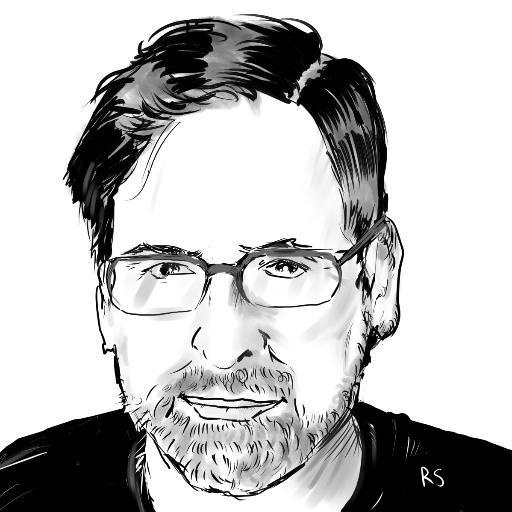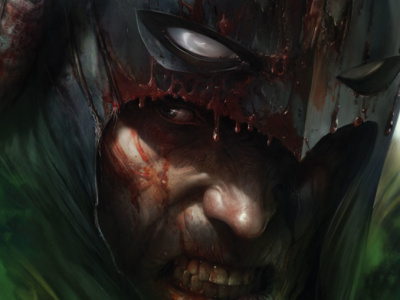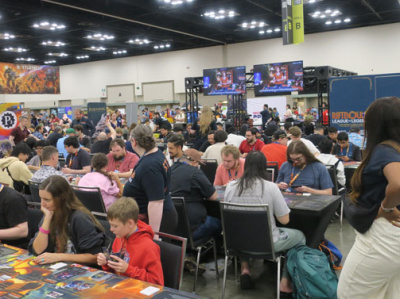At the end of her “rant” (in scare-quotes because it is actually the opposite of a rant; it is a burst of pure logic and reason), Wilson makes what I consider to be the key point of the whole issue:
"On a practical level, this is not really a story about “diversity” at all. It’s a story about the rise of YA comics. If you look at it that way, the things that sell and don’t sell (AND THE MARKETS THEY SELL IN VS THE MARKETS THEY DON’T SELL IN) start to make a different kind of sense." [emphasis in original]
That bit in parentheses is really, really important. The “markets they sell in vs. the markets they don’t sell in” is a polite way to say “bookstores vs. the direct market.” Or, perhaps, “the real world vs. the comics world.”
But even within the limited confines of the direct market, it’s not clear that Gabriel’s point about reader preferences gets to the heart of the issue. What Marvel is seeing in microcosm with its sales dip is the same basic problem that we’ve seen in comics distribution for the past 30 years: a direct market embodying a checklist of economic pathologies so profound and systemic that it’s a wonder that it functions at all.
Inside the bubble. Consider the environment inside the DM bubble. At the top, you have a publisher landscape dominated by two enormous players offering – let’s face it – nearly identical products, for whom uniformity, predictability and brand experience are the main customer benefits. Underneath that is a middle tier of earnest competitors trying to differentiate on the basis of quality, values (“creator ownership!”), affiliation with other popular brands/properties via licensing, and service to niche audiences, or else trying to grow themselves by the bootstraps into media brands capable of going toe-to-toe with the Big Two. Then at the base of the production pyramid is a jungle of content providers who are in the market for reasons other than commercial success: creator/publishers who simply want to be in the comics business and would-be media entrepreneurs who see comics as a stepping-stone for their ambitions in other areas. These folks are barely influenced by market pressures and undaunted by long odds, so they keep producing their product even if there is no market for it.
That’s a complicated merchandise environment for any retailer, especially because the largest players don’t do much to generate demand beyond activating their core audience, and the middle and bottom layers represent vast uncertainty and inventory risk. In the best case, you’d have a distribution and retail organization with the resources, scale and organization to rationalize the chaos on the producer side so that the right products can find the right customers, even if those customers aren’t part of the traditional audience.
But you don’t. You actually have the opposite of that. Retailers are almost exclusively small, independently-owned businesses (with all the plusses and minuses that entails), who not only can’t bring order to the market, they can barely control their own environment, often finding themselves at the mercy of larger forces such as rent, labor market issues, and even traffic and parking. Retailers are good people fighting a noble battle, but they are overmatched.
The only place you do have consolidation and scale is at the distributor level, exactly where it is needed least. In most supply chains, distribution is a commodity service, a facilitator of higher-value transactions between producers and consumers. In the direct market, the distributor is the power-broker and chokepoint, largely unfathomable to outsiders (like trade book publishers) whose participation is essential for market expansion, and whose whims regarding catalog placement, shipping and costs can dictate success or failure of the entire commercial enterprise.
The free-fire zone. Because of this topsy-turvy arrangement with misaligned incentives and mismatched roles everywhere, the direct market has become a walled-off free fire zone where everyone is fighting for the same dollars, but is structurally incapable of expanding. Everyone wants new customers in theory, but it’s no one’s actual job to reach out to them and serve their needs if they are any different from the existing core. In fact, some people might lose their jobs (or find themselves in jobs they don’t want) if it were to actually happen.
As such, it’s prone to boom and bust cycles because in good times, everyone at the unorganized producer end of the industry floods the zone with product chasing the same customers, and in busts, no one at the unorganized retail end has the resources to absorb a loss.
Meanwhile, outside the ghetto walls, a completely different reality prevails. Publishers and retailers are incentivized to grow the customer base as well as serve niche markets. There is marketing and demand generation at the top, diversity of scale and organization at the bottom, and a distribution system generally controlled by one end or the other rather than vice versa. There is not only room for “mainstream” content and “diversity” because both strategies play complementary roles in growing the pie, there is much more fluidity between these two approaches because a successful “diversity” strategy can easily become “mainstream” in terms of sales, and no one loses their job or their identity as a result. The structure of the Direct Market, with its focus on intensely cultivating the same fans, makes that kind of thing much harder to pull off.
A devil’s bargain. Observers have been making these points about the direct market for years but it’s never made much of a difference because comics were their own little world, and everything seemed to muddle on despite the problems. Now that comics have a cultural footprint way out of proportion to their commercial footprint, the disparities between the direct market and other, properly functioning markets have become glaring.
The solution to this is something that is painful to contemplate: a big shakeout and revision of practices on the publisher side (requiring an expenditure of money that no one wants to make); a rollup and consolidation of the retail channel (involving an entity with the expertise and resources to pull that off, whose existence is dubious); a complete disruption of the distribution system (emerging from parts unknown); and a mass dilution of the core fan market to accommodate the larger potential audience (which has already happened, but no one wants to acknowledge). In other words, the utter transformation of the quirky legacy system that undergirds comics culture into something indistinguishable from ordinary consumerism.
The opinions expressed in this column are solely those of the writer, and do not necessarily reflect the views of the editorial staff of ICv2.com.
Rob Salkowitz (@robsalk) is the author of Comic-Con and the Business of Pop Culture.









